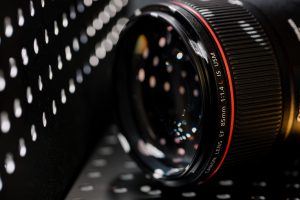Okay, friendtographers, you’ve probably heard a bunch of different numbers and f/stops on lenses by now, but may be wondering wtf they mean. Or you’re planning to buy a new lens but you’re unsure which one will fit your needs best. I’m going to explain lenses in the simplest way possible, so this won’t be a lengthy post about the technical ins and outs, but rather a general explanation that you can apply when deciding on which to purchase.
First and foremost, you’ll want to make sure the lenses you are looking at are compatible with your camera so check if you’re using a full frame or a crop sensor. Typically people start out with crop sensor cameras as they are more affordable for beginners.
Second, your camera may have come with a lens, this is called a “kit lens.” They’re called that because the camera was most likely purchased in a kit to get you started. They are typically an 18-55 zoom lens of a higher aperture (like 5.6) which means it has a wider-open focal point and doesn’t produce a lot of background blur. Kit lenses tend to be of base-quality so upgrading lenses is often the next step after the camera purchase. A great upgrade I always recommend is the 50mm 1.8. You can get one for about 100 bucks and that 1.8 aperture will change your life coming from where you were with the kit lens!
Third, let’s clarify what “Prime” means. Prime is a lens that doesn’t zoom, it’s fixed. Prime lenses are often the preferred lenses for a lot of people unless you’re shooting something that requires the ability to get close and far quickly, like a wedding. For this post, I will be talking about Primes as that’s all I personally use.

Okay so, what do millimeters do?
With lenses you’ll see a millimeter number, followed by an f/stop, which is the lens’ aperture. For example, 35mm 1.4 means the lens is a 35 millimeter, and the f/stop (aperture) is 1.4. The most direct way to explain what the millimeter does, is to tell you the lower the number, the more surroundings you can capture, versus the higher numbers which are more magnified or tight your shot will be.
If I am shooting inside a smaller space or on a location where I want a lot of the surroundings to be captured, I shoot with my 35mm because that lens pulls back more of the surroundings. If I am doing portraits of one person and I want tighter shots where they are the only focal point, I’ll use my 85mm since that magnifies in closer and compresses the surroundings to make my subject stand out. A 50mm is said to be closest to how the human eye sees, so that lens tends to be a favorite for people who want a little of both. While my first lens upgrade was a 50mm, I have since switched to solely using the 35 or 85, since those two give me the most diversity.
Now let’s talk f/stop.
You now know that f/stop is the same as aperture. It indicates how tight or wide your focal point can get. (Like ISO and Shutter Speed, Aperture also controls how much light comes into the camera but that’s not for this post, more on that the one on shooting in manual mode.) For now, let’s just talk about what aperture does. You know when you see a photo of someone and the background is super blurry, making them pop? That’s a lens with very low aperture (like a 1.2 or 1.4). How far and close you’re standing to the subject also plays a factor in this, but just know the more blur you want, the lower the f/stop you’ll need. Typically, the lower the f/stop, the pricier the lens which is why the 50mm 1.8 is such a steal and will seriously improve your photos once you’re ready to upgrade your kit lens.
What does the “L” on Canon lenses mean?
I only shoot with Canon products (personal preference) and my lenses are L series, but they make many that aren’t. The “L” stands for “luxury” and indicates slight upgrades in optics. They’re also heavy AF- my 85mm 1.4L is a beast that I swear is giving me one Popeye arm (lol). When it’s on, my camera weighs in at just under 4.5 pounds. Yikes. But I love them.
That’s it! Let me know if you have any questions expanding on what I talked about here. You can always shoot me an email at laurenashbyphoto@gmail.com and if you’re local, contact me about mentoring services like shadowing a shoot 🙂 Happy shooting!
comments +